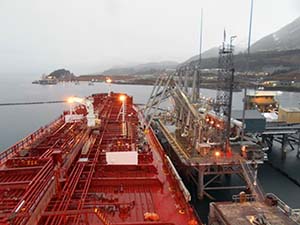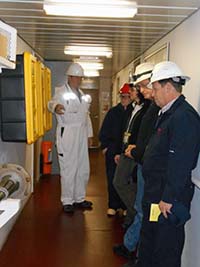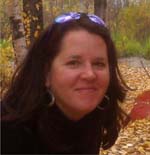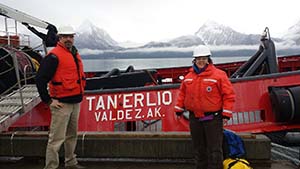By ALAN SORUM
Council Project Manager

On October 27, Board President Amanda Bauer, Executive Director Mark Swanson, Director of Programs Donna Schantz and Project Manager Alan Sorum were given the opportunity to tour the tanker Overseas Martinez at the Valdez Marine Terminal. Arrangements for the visit were made by Marine Superintendent Patrick Callahan of Overseas Shipping Group, commonly known as OSG, who traveled from Tampa, Florida to Nikiski and rode the tanker over to Valdez to conduct the tour. Mr. Callahan provided the group with a unique opportunity to become better acquainted with the OSG fleet.
The Overseas Martinez is a 600 foot long tanker operated for Tesoro by OSG. Built in 2010, the tanker can carry 338,447 barrels of cargo. It calls at Valdez, Nikiski and ports along the West Coast. This tanker was built at the Aker Shipyard in Philadelphia as a crude oil and clean product tanker. The vessel received extensive retrofits to provide extra insulation and heating for the rigors of Alaska service.
A number of interesting things were noted about the Overseas Martinez. The vessel is powered by a large, two-cycle diesel engine. Two-cycle engines produce power at every revolution of the crankshaft. This ship uses direct drive to turn its propeller shaft and prop. The engine needs to be physically stopped and restarted in the opposite direction to reverse course. This means advanced planning becomes important during maneuvering.

Interestingly, all the rainwater that collects on the deck of the Overseas Martinez is collected and treated and prior to being discarded to prevent potential sheens. During loading operations, the vessel employs a hull stress calculator to ensure its 46,000 tons of cargo is loaded in a sequence that does not damage the tanker. Because of its concerns with potentially illegal overboard discharges, the vessel is equipped with a sentinel system that reports any discharge of water or other substance through the hull to the water to OSG’s management team in Tampa, Florida.
This is the first visit the council has had on a tanker moored at the Valdez Marine Terminal in a long time. In the recent past, Polar Tankers has graciously allowed firefighter tours during the Marine Firefighting Symposium at the Valdez Container Terminal. We thank Captain George Kugler and Chief Engineer Mr. Paul Russell for the informative tour and hospitality. The visit would not have been possible without the help of Marine Superintendent Patrick Callahan.


